Recent Storm Damage Posts
Spring Weather to Watch Out For In Georgia | SERVPRO® of North Atlanta/Buckhead
3/25/2022 (Permalink)
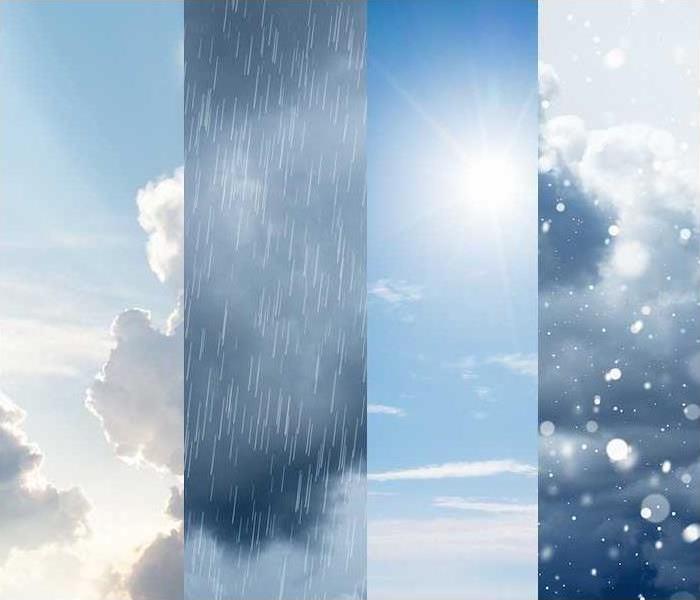 Extreme temperature changes can lead to severe weather. SERVPRO of North Atlanta/Buckhead is just a phone call away if you need immediate assistance.
Extreme temperature changes can lead to severe weather. SERVPRO of North Atlanta/Buckhead is just a phone call away if you need immediate assistance.
The United States is a big country. It's the third largest in the world, after Russia and Canada. But if you don't count all of the US territories, China is bigger.
The USA has many different areas, each with their own weather. The weather can be very different from one area to the next. Each area faces different weather threats throughout the year.
In the spring, you can expect different weather in different parts of the country. In Georgia, we need to be aware of what will happen when two warm and cold air masses meet.
The Pacific Northwest is known for a lot of rainfall during the spring. This can cause floods and water damage to houses. Snowfall will continue at higher elevations, and the melting and runoff from that will bring new concerns of their own.
The Upper Midwest and Northeast have the longest winters. The temperatures stay cold for a long time. People in these parts of the country can expect snowstorms and blizzards throughout late spring or early summer in places from Maine to South Dakota, when temperatures start to rise.
Residents of the southern West Coast should be wary of intense heat waves. They should also be aware of possible safety concerns and tsunamis on Hawaii's South Pacific coast. This is because of tectonic activity.
The heartland of America (Iowa to Texas) is a region that will be affected by many different types of storms. These storms can include tornadoes, droughts, and wild fires. These events can be dangerous and cause a lot of property damage.
Extreme weather is a big concern in the Southeast, especially in Georgia. This includes tornadoes and severe thunderstorms in landlocked states, as well as hazardous rip currents on the coast and hurricanes during the spring. Georgia is often affected by thunderstorms and tornadoes in the spring and summer. These are often caused by remnants of tropical storms that have crossed the sea.
No matter where you live in the United States, it is always important to be prepared for the weather. Your state might have different weather than your friend's state, but you should always be ready for anything.
Luckily, help is only a phone call away if extreme weather causes you to suffer property damage from water, fire, or other agents. For prompt and professional restoration, contact SERVPRO of North Atlanta/Buckhead.
Deductibles and Storm Damage: Can You Claim Losses as Deductions?
2/2/2022 (Permalink)
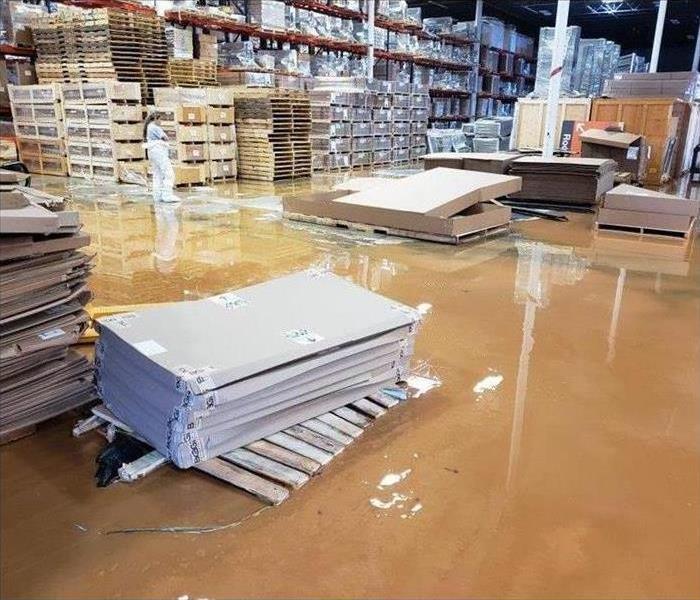 Storm damage can cause significant losses for a business.
Storm damage can cause significant losses for a business.
Deductibles and Storm Damage
Storm damage can cause significant losses for a business. However, the answer to whether those losses are tax-deductible or not depends on several factors, the biggest of which is whether items or potential claims are insured. There is a term, casualty loss, which refers to the sudden or unexpected loss of something due to an unusual or sudden event. These losses can be deducted; however, there are several stipulations that may prevent you from using this deduction.
1. Reimbursable Items
You likely cannot claim a casualty loss deduction for items that are considered reimbursable, meaning items that are already insured and protected from loss. Therefore, anything covered under your commercial policy cannot be used as a deduction.
2. Routine Use or Neglect
Also, claiming storm damage loss for items that were already beyond their expected life or not adequately maintained will likely not be accepted as a deduction. For example, claiming an HVAC unit, which has been on the fritz with no routine maintenance checks, has unexpectedly failed due to a storm is not likely to pass muster.
3. Business Interruption
A casualty loss deduction also cannot be applied to projected future profits, meaning that if a storm causes business interruption, you cannot claim a loss on those profits you expected during the shutdown. The reason is due to actual loss and predicted loss. Deductions work by proving actual losses, meaning proven losses. Projections of future income are not proof of that income.
4. Restoration Work
Additionally, a casualty loss deduction will likely not encompass the costs of restoration work unless the work is not covered by your business policy. You can contact your insurer or a disaster restoration specialist in the Peachtree Battle, GA, area to find out more information on coverage and payment options.
Storm damage is an unfortunate occurrence, but one that your business is hopefully protected against through adequate insurance coverage. If not, you may be able to claim a casualty loss deduction, but you will want to review the list above to ensure your deduction claim can make it through scrutiny.
Property Loss and Flood Damage: How To Make a Flood Damage Claim
1/12/2022 (Permalink)
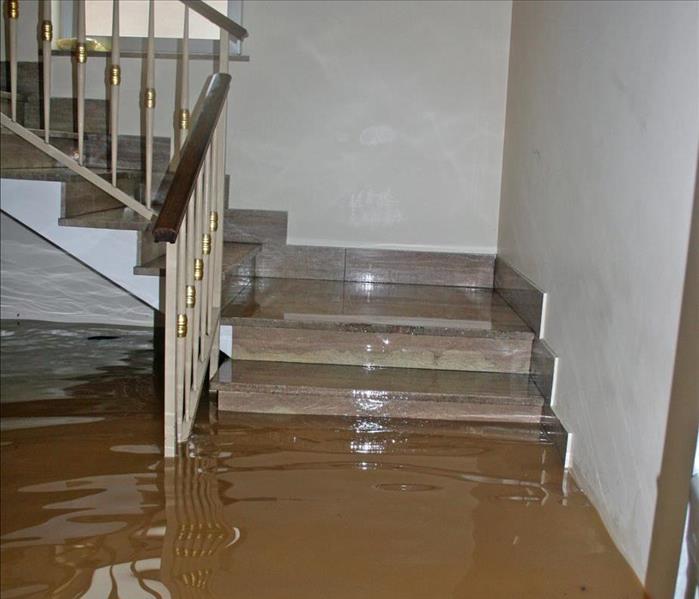 Flood damage in a Buckhead, GA home.
Flood damage in a Buckhead, GA home.
How To Make a Flood Damage Claim
A flood claim can be overwhelming since, at times, it follows in the wake of significant property loss. Thankfully, as insurers are at the tip of the bureaucratic food chain, there is a standard process to filing a claim, which should ease some of your stress.
1. Notify Your Insurance Provider
While the emotional response to a flood can be devastating and even mentally crippling, the first thing to do is notify your insurance provider. Notifying your insurance provider accomplishes two things:
- It begins the process of rebuilding your life and your property.
- It provides clear expectations of responsibility between homeowner and insurer.
After initiating contact, your insurer will likely schedule a visit from an adjuster to assess the damage to your property and to determine ultimate causality.
2. Document All Property Damage
The essential piece of any flood claim is the documentation of all property damage. True, the adjuster will take note of obvious property damage, but you will want to do your own walk-through and photograph any damage you see; not because adjusters aren’t trustworthy, but because you know your property better.
3. Compile and Complete a Proof of Loss Statement
An insurance claim typically requires a Proof of Loss statement, which is submitted within 60 days of the incurred damage. This document consists of your sworn statement, the claim amount, and any supporting proof or documentation. You can and should include any photographs and receipts in this file.
4. Collect Restoration Estimates
Once you have filed your claim and an adjuster approves further action, you can collect estimates for any necessary restoration work. Collecting estimates is as easy as calling a few emergency restoration companies from the Buckhead, GA, area and scheduling a visit. Once a list is compiled, you can present it to your insurer, and they will help you select the best option.
Flood damage is a nuisance, and it can be emotionally and physically exhausting sorting through the destruction. Fortunately, a flood claim is a predictable procedure with standard practices and steps that are typically followed by every insurer.
How to Remove 2 Feet of Water From a Garage
11/10/2021 (Permalink)
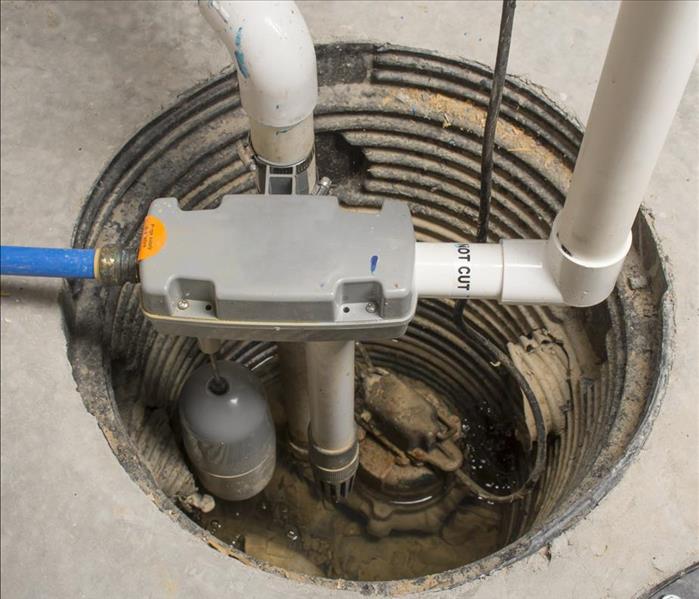 Sump pumps can be ideal for commercial garages.
Sump pumps can be ideal for commercial garages.
Three Different Types of Pump That Can Remove Water From a Garage
There are several equipment options for extracting two feet of water from a commercial garage in Paces Ferry, GA. Learn about the differences between sump, trash, and truck-mounted pumps, and determine which of these three pump designs could be the best choice.
1. Sump Pump
A submersible industrial pump is a portable solution for removing flood water. These pumps draw water into a tank or container. Sump pumps can be ideal for commercial garages that are not convenient to access with a truck-mounted pump. These pumps may have bilge and ballast, centrifugal, or cantilever designs.
2. Trash Pump
Trash pumps are better suited for pumping up thicker liquids containing mud, silt, and debris than a sump pump or pump truck hoses. These pumps are typically heavy-duty centrifugal designs with deep impeller vanes and large discharge openings. A strainer on the end of the pump ensures that this equipment does not suck up debris that is much larger than leaves or twigs.
3. Truck-Mounted Pump
A pump truck is another portable solution for extracting standing water. This truck relies on industrial hoses to suck up water from a commercial garage or any other flooded location and transports this water to an appropriate disposal facility for black water from a flood. These pumps are particularly used for extreme flooding situations, and may be ideal for dealing with two or more feet of standing flood water.
These three pump solutions can remove standing water from a garage. The right pump depends on the accessibility and location of a garage as well as the quality of the flood water. While all flood water is considered Category Three black water, a large amount of debris or silt may call for a trash pump. Find out which pumping equipment is right for the job by scheduling a consultation with a storm damage restoration service in Paces Ferry, GA.
5 Ways Urban Areas Are Taking on Flooding
9/14/2021 (Permalink)
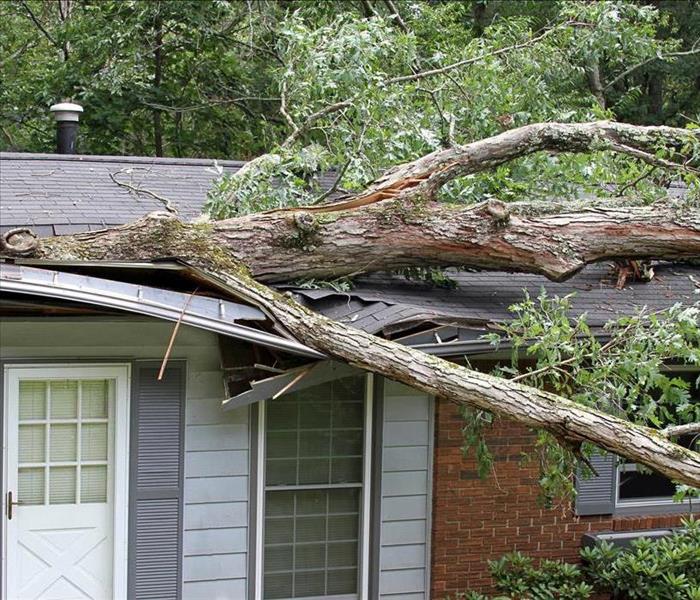 Although a storm can come on fast, advanced warning systems can help people be prepared for the worst.
Although a storm can come on fast, advanced warning systems can help people be prepared for the worst.
Below Are Five Methods Of Gaining Traction Locally And Globally
Storms with torrential rain and steadily rising high water have affected many businesses in Sandy Springs, GA. While personally being prepared and reinforcing structures to minimize damage may help avoid the need for a water damage and restoration expert, other factors play a role, including a city’s flood prevention measures. With more technology available, many urban areas are working to curb flood issues.
1. Sponge Spaces
This ecological approach involves placing features that can naturally hold, clean, and drain water to be used within a city for irrigating farms and gardens, replenishing aquifers, or replacing water used for flushing. Along with reducing flood issues, it can enhance overall water quality.
2. Green Roofs
One way to stop flooding is to prevent rain from cascading off of buildings. Roofs covered, or partially covered, in vegetation, which has an underlying waterproof membrane, absorb the water and reduce runoff.
3. Sustainable Drainage
Cities are covered in concrete, which is not a permeable material. When the rain falls, it flows toward the drainage systems, potentially creating high water. Many cities are replacing materials that block moisture with ones that absorb it. Along with more green spaces, there have been advances in concrete itself to make it more permeable.
4. Warning Mechanisms
Although a storm can come on fast, advanced warning systems can help people be prepared for the worst. While some communities do regular monitoring of rainfall amounts, stream levels, and flow data, many are moving to real-time telemetry systems for enhanced data collection and faster response times.
5. Enhanced Sewer Systems
The first step is keeping existing sewers clean of debris, tree roots, and other buildups. On top of that, many cities are improving water management via upgrading underground piping and drainage systems to separate the rainwater.
Although high water that leads to a flood may not be completely avoidable, communities, residents, and business owners can make a difference in preventing a disaster.
There’s Still No Place like Home: Managing Your Expectations and the Cleanup after a Storm
9/2/2021 (Permalink)
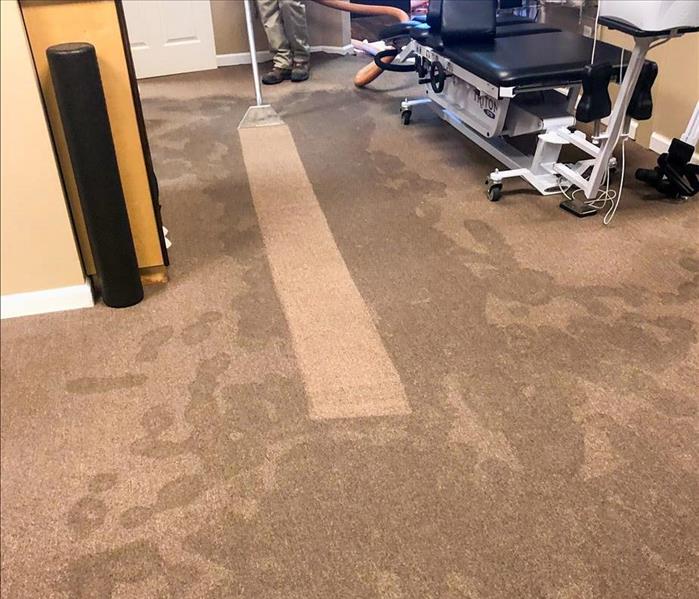 Storm damage, with its grueling process of water removal and tear out, can be overwhelming.
Storm damage, with its grueling process of water removal and tear out, can be overwhelming.
It can be challenging to look at your home after a severe storm, seeing the extent of the damage, but when a storm causes extensive water damage, the path to restoration can seem insurmountable. Thankfully, the storm restoration process can be summarized in a few simple steps.
1. Extract Excess Water
The first step in the process is to extract as much excess water as possible, using several wet/dry vacuums. It’s essential to remove the water thoroughly and quickly to avoid the buildup of mold because, believe it or not, mold begins to develop within 24 hours.
2. Remove/Tear Out Wet Materials
Once you have extracted the excess water, it is time to begin the tear-out process. During this time your focus has to be on removing anything that’s wet, which goes beyond just removing rugs and furniture. You should also remove carpeting and the pad underneath, drywall and the insulation behind, and anything else where mold can develop.
3. Dry the Structure
Once you have removed any wet materials and opened the walls, it is time to dry your house. You are going to need to do more than just open doors and windows, while this helps it does not do enough to circulate the air. During this phase of the cleanup process, you’ll want to rent several industrial fans and air movers to help distribute the air and dry your home.
4. Seek Assistance
While trying to salvage your home can be a massive undertaking after a storm, you do not have to do it alone. You can look up storm restoration specialists in North Atlanta for assistance. Many insurance companies even require it. These professionals will not only have the tools necessary for drying out your home, but they clarify the restoration process and relieve some of your worries.
Storm damage, with its grueling process of water removal and tear out, can be overwhelming, but the few steps above should help alleviate some of that stress, and, while the cleanup process takes time, just know that there’s still no place like home.
5 Steps To Develop a Business Continuity Plan
6/14/2021 (Permalink)
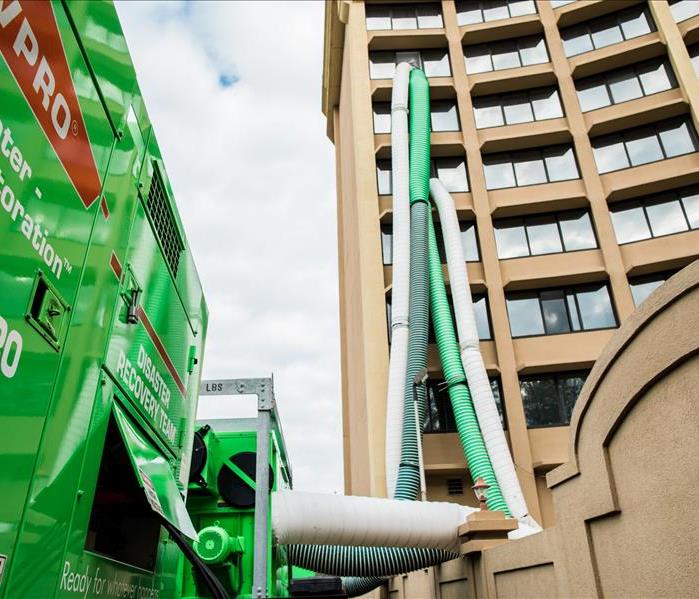 We can handle any sized commercial storm damage loss.
We can handle any sized commercial storm damage loss.
5 Steps To Develop a Business Continuity Plan
When disaster strikes your business, the difference between survival and bankruptcy is usually about preparation. This includes developing a continuity plan and having all the components set up in advance, because when you’re in the middle of a catastrophe, all you can do is react, not plan.
Fortunately, all this has been well-researched and practiced. If you take these five steps before a storm hits, you’ll almost certainly survive where others succumb to the devastation.
Create a Business Impact Analysis
Have a meeting to discuss the most likely disasters in Atlanta, GA. Your goal is to create a risk assessment so you can properly allocate resources. This impacts every other step.
Develop Recovery Strategies
Identify the most time-critical processes that are likely to be impacted after receiving serious storm damage. What resources are needed? How long can you survive without revenue generation – and how is it likely to be impacted by the storm? How will employees be impacted? What about utilities?
You may also consider business interruption insurance. It’s not cheap, but it has saved countless enterprises over the years.
Plan Development
Now that you have a good idea of the risks and how to recover, create documentation to support your strategies. Get all key employees involved and listen to suggestions from experienced workers. Consider what flooding would do to your building and have a water-resistant place to put documentation.
Create A Ready Profile
Your local restoration experts have a readiness program that includes a free smartphone app and a no-cost assessment of your facility’s needs. They’ll help you develop an Emergency READY Profile that contains all the emergency info you need when things fall apart.
Test Your Plans
Run an exercise to locate flaws and identify where assets might be more helpful. Resource management during and after a disaster is complicated and confusing, so testing is essential to a smooth recovery.
When your continuity plan is set up and tested, your business will be far more likely to recover from a disaster. Don’t be afraid to delegate the task to your most trusted employees – just be sure someone does it.
Routine Maintenance Can Protect Your Business From Storm Damage
3/30/2021 (Permalink)
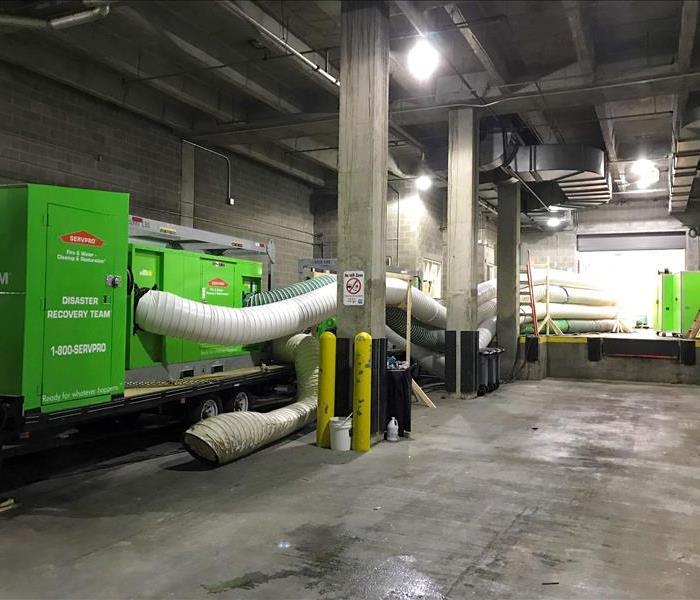 Have your building inspected once a year.
Have your building inspected once a year.
Protect Your Business From Storm Damage
Routine exterior maintenance of your Atlanta, GA commercial building can help the structure better withstand inclement weather. Whether you are anticipating strong thunderstorms or heavy snows, a strong exterior will keep your business protected.
Inspection: A thorough building inspection will alert you to any weaknesses or problems that make your building more vulnerable to storm damage. A full exterior inspection will cover all of the following areas:
- Roof
- Foundation
- Windows
- Doors
- Brick, stucco, siding, etc.
- Gutters and downspouts
The frequency of inspections depends on a variety of factors, including the age of the building and local weather patterns. At minimum, have the building professionally inspected once a year, ideally before the stormiest season. Make sure the building is checked for cracks in the walls and foundation, loose gutters and weak spots in the roof. A trusted building inspector can let you know what areas of your structure may need more frequent inspections.
Even a building that passes an inspection can still be vulnerable to storm damage. If this happens, an experienced restoration service can get your property back to normal so that it can successfully weather the next storm.
Maintenance: In addition to routine inspections, it is important to keep your building maintained. Exterior maintenance involves more than simply repairing the issues discovered during inspections. Keep gutters and downspouts clear and make sure they are not loose. Remove debris from the roof. Pressure wash as needed to minimize fungal growth. Make sure all signage is securely attached to the building.
The nearby landscaping also affects the structural integrity of the building and should be properly maintained. Keep limbs trimmed and make sure trees are healthy and strong to prevent them from damaging the building. Consider grading the lawn away from the building and installing plants and mulch to prevent flooding.
Stormy weather can cause serious problems for your commercial building. However, a little routine exterior maintenance can prevent many situations.
4 Tips for Getting Water Out of Your Crawl Space
1/15/2021 (Permalink)
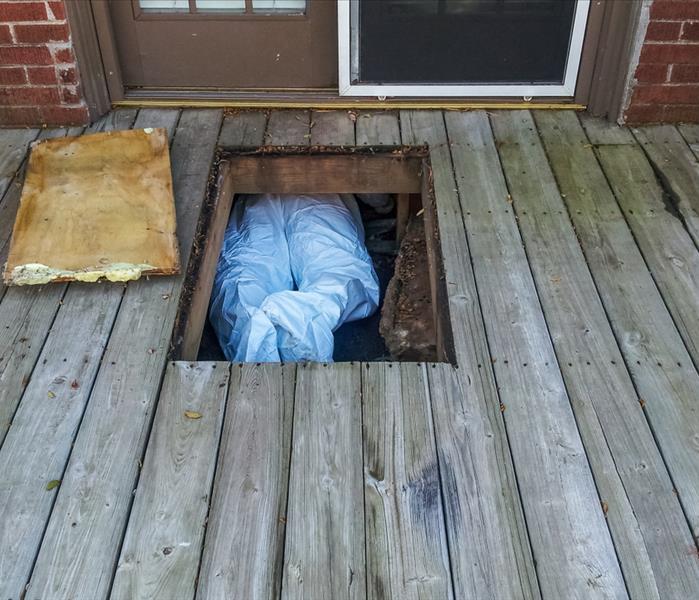 Removing water from your crawl space is a serious process that can require some equipment
Removing water from your crawl space is a serious process that can require some equipment
Following These Tips Will Get You Started On The Right Path
When there is water under your home, you must get it out. While it may not be easy, removing the water will prevent mold from causing structural damage. However, a lot of people don't know the best ways to remove excess water. Most people think you need serious equipment, such as a sump pump and a trash pump.
1. Identify the Problem
You should identify the problem that is letting the water into your home in Ridgeview Park,GA. Common issues include foundation cracks and leaky pipes. You may also find water seeping through the floor around your toilets. Before removing the water, you need to fix the problem.
2. Buy a Submersible Pump
A submersible pump is a valuable piece of equipment that removes standing water. They are available at any home improvement store. Dig a hole and install the pump into that. This is generally only necessary if there is excessive flooding. In this case, it may be better to have a remediation team fix the damage than trying to do it yourself.
3. Suck Up the Water With a Shop Vacuum
Also known as a wet and dry vacuum, this is the most common tool for removing standing water. This is because it can suck up water and let you dump it outside easily. Use this to suck all the water up. Keep vacuuming until the plastic vapor barrier on your floor is visible.
4. Install a Dehumidifier
Humidity can allow mold to grow in your crawl space. It can also cause the structure of your home to rot. Therefore, you should try sealing the vents on your crawl space and installing a dehumidifier. This is an easy fix you can make on your own.
Removing water from your crawl space is a serious process that can require some equipment. Generally, you will be able to do this on your own. However, serious cases may require that you get help from a professional.
5 Ways to Protect Your Business from Flood Damage
11/11/2020 (Permalink)
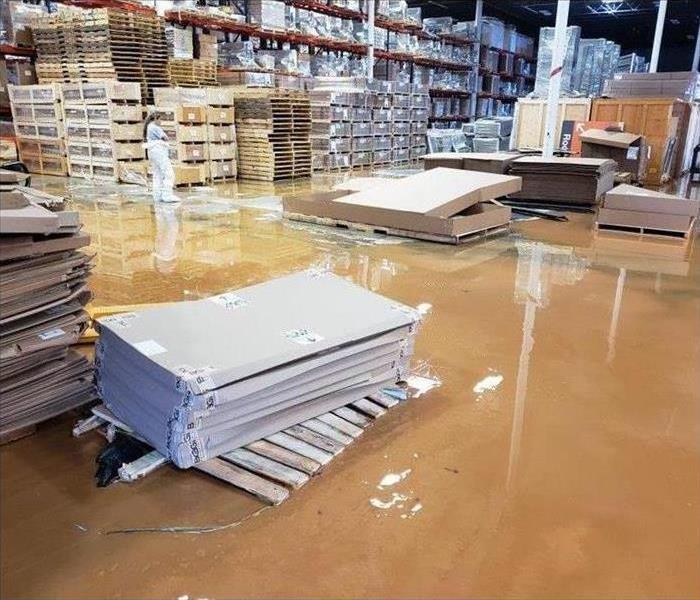 Commercial flood damage in Atlanta, GA
Commercial flood damage in Atlanta, GA
Prepare To Face A Flood
As a business owner, you need to make sure that you're prepared to take on any type of disaster, including flooding. Failure to address or remediate water damage in a timely manner can result in devastating amounts of secondary damage. Protect your business in Atlanta, GA, by preparing to face a flood before disaster strikes.
1. Assess Your Location's Risk.
There are multiple ways to assess your building's flood risk. The Federal Emergency Agency can provide you with a map that displays locations that have a higher flood risk.
2. Create and Discuss a Disaster Plan With Your Employees.
It's a good idea to implement a couple different disaster plans for your business. It is vital that you inform and train your employees on the specifics regarding any type of evacuation plan. This can help ensure everyone's safety in the event of a major black water flood.
3. Install Alternative Energy Sources.
Less severe storms or floods might not warrant a complete evacuation. If a business can continue safely, then you should make every attempt to do. Installing backup generators and air conditioning units can help expedite recovery time and reduce the amount of income lost.
4. Protect Important Records.
Your business's most important files should have multiple backups regardless. In case of flooding, you should make steps to waterproof these backup copies. Store physical documents in waterproof containers that are elevated at least one foot above the projected flood level. Electronic documents should have multiple backups stored in the Cloud.
5. Purchase Commercial Flood Insurance.
According to FEMA, almost 40% of small businesses are unable to recover from even the smallest of floods. Insurance coverage can help prevent flood damage from killing your business.
Don't let your business succumb to water damage caused by flooding. Take the time to ensure that your building, employees and personal property are all prepared to face any type of disaster. Make sure to contact storm remediation experts if your business has fallen victim to flood damage.
Cleanup Procedures Following a Flood
10/20/2020 (Permalink)
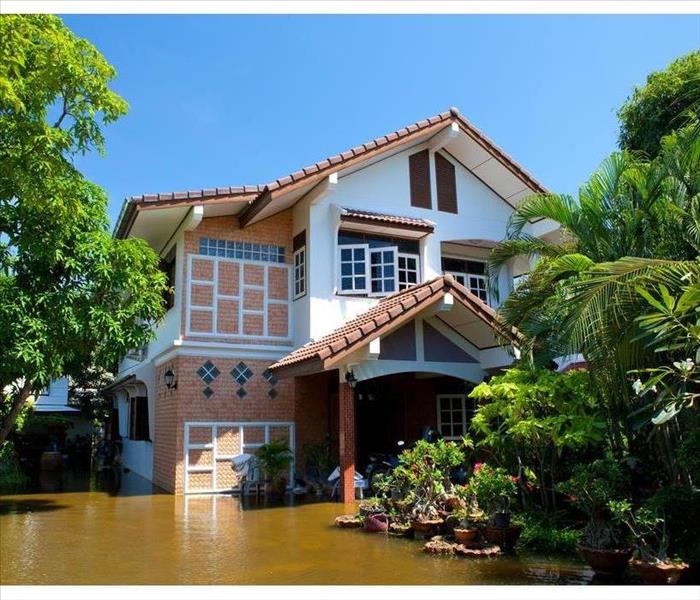 Flooded home in Paces Ferry, GA
Flooded home in Paces Ferry, GA
Steps To Take To Ensure Safety Following a Home Flood
For many residents in Paces Ferry, GA, the potential for flooding is always a risk. They've likely become flood experts since they've been through it a few times already. For people who are new to flood-prone areas, they may not yet the proper steps to take to ensure safety following a home flood. There are some basic things you should do no matter where you leave.
1. Assess the Damage
You should never enter your home immediately following a flood or while flood water is still standing. Call a restoration company to assess the damage for you. These service professionals can also start mitigation efforts to save anything that can be salvaged.
2. Crawlspace Damage
If sewage entered into your home's crawlspace, it is going to have to be removed before any other cleanup occurs. This may require waiting on the ground beneath the home to dry.
The process can be helped by employing the assistance of ventilation, and if possible, fans. This is part of the storm damage cleanup should not be attempted by yourself due to the bacteria and health risks associated with raw sewage.
3. Dry What You Can
Once you're cleared to re-enter the home, anything that needs to be saved needs to be dried as soon as possible. Perhaps the biggest risk following a home flood is the potential for mold growth. Mold is everywhere and it is always waiting to find a moist environment to grow. This growth can occur in as little as 24 hours.
It's possible you're going to have to let some things go during this phase of the cleanup. Home materials such as flooring and some dry wall will have to be replaced.
Experiencing a home flood is never easy, no matter how major or minor the damage. Things will be lost, but most things can be replaced. Always be familiar with your insurance policy so you know what to expect if you do experience flood damage.
What To Do After a Flood
8/7/2020 (Permalink)
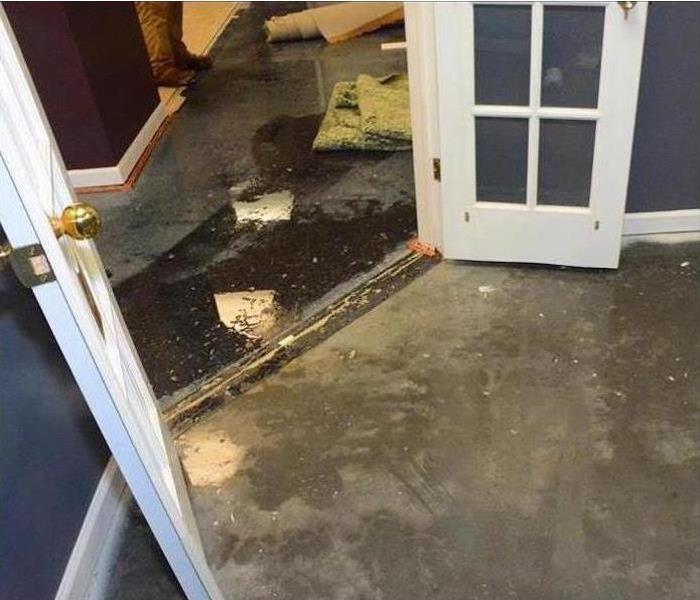 Storm damage in Morningside, GA
Storm damage in Morningside, GA
How To Minimize Flood Damage
When a major storm hits your home in Morningside, GA, you may have a lot of flood damage to handle. While you need certified flood restoration specialists to mitigate your home flood thoroughly, there are a few small steps you can take to minimize the damage it causes.
Sort
One of the main concerns with storm damage is the potential for mold growth. Mold damage can occur in as little as 24 hours after excess moisture has set in, so it's important to take steps to prevent it. Start by sorting the soggy items in your home into several categories:
- Textiles
- Wood
- Glass
- Ceramic
- Metal
- Plastic
Nonporous items such as metal, plastic, and glass will probably be okay. Even if mold grows on the surface, it is easier to mitigate. Textiles, carpet, and wood, however, may have to be thrown out if they have mold damage after a home flood. The spores grow into the fibers and may be impossible to remove.
Disinfect
Flood waterfalls under the Category 3 contamination level. This means it is likely infested with bacteria and microbes. A thorough cleaning that disinfects everything the water touches is necessary. The restoration company will handle most of this process, but you can clean some items. Clothing, for example, should be washed in hot water with a fabric-safe bleach. Surfaces should be considered contaminated until they have been properly cleaned.
Dry
To prevent secondary damage, you must get rid of extra moisture. The technicians may use several techniques to accomplish this. They pump the standing water out of your home and use industrial fans to dry surfaces. A dehumidifier may also be used to get the humidity level in your home back to the normal 40-50% it's supposed to be.
A home flood after a storm may cause a lot of damage. With quick action and the help of qualified professionals, you may be able to prevent further problems.
 Extreme temperature changes can lead to severe weather. SERVPRO of North Atlanta/Buckhead is just a phone call away if you need immediate assistance.
Extreme temperature changes can lead to severe weather. SERVPRO of North Atlanta/Buckhead is just a phone call away if you need immediate assistance.




 24/7 Emergency Service
24/7 Emergency Service










